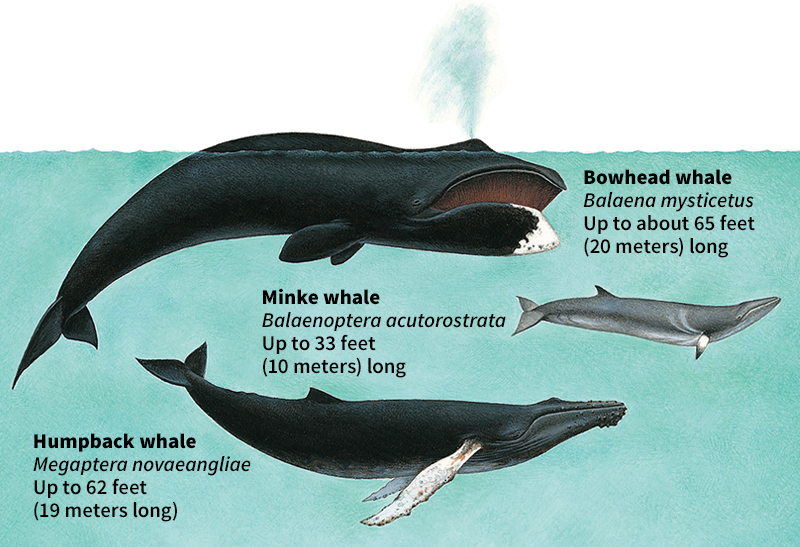Bowhead whale is a large whale of the Arctic Ocean. It can reach up to 65 feet (20 meters) in length, with flukes (tail fins) more than 20 feet (6.1 meters) across. Adults can weigh 100 tons (91 metric tons) or more. The whale’s skin appears primarily black with a white patch on the chin.

Bowheads remain in the Arctic region the year around. A layer of fat below the skin, called blubber, provides insulation from frigid seas. The blubber may be more than 1 foot (30 centimeters) thick. Bowheads feed mainly on tiny shellfish called copepods. Bowheads have no teeth. Instead, they filter the water with plates called baleen. Bowheads often feed at the surface, but they can feed at depths of more than 1,000 feet (300 meters). Female bowheads begin to reproduce at about 15 years of age. A female gives birth to a single calf every 3 or 4 years. Bowheads may live more than 200 years.
Loading the player...Bowhead whale
There were probably once roughly 50,000 bowhead whales. By about 1900, hunting had reduced them to a few thousand. A hunting ban has helped them recover, but they are still endangered. Several Inuit villages take small numbers of bowhead whales each year in carefully managed hunts. The hunts are important to Inuit culture. Bowhead whales may be threatened by offshore oil drilling and increased ship traffic.
See also Whale (Baleen whales).
